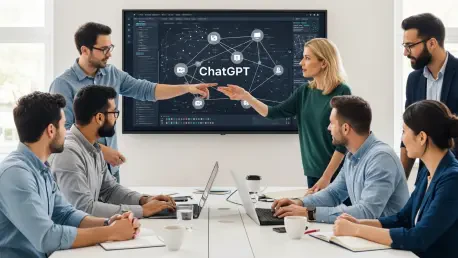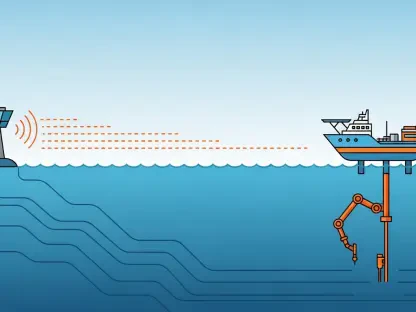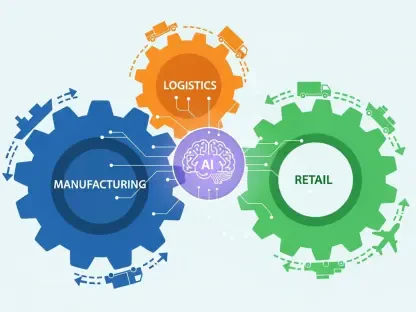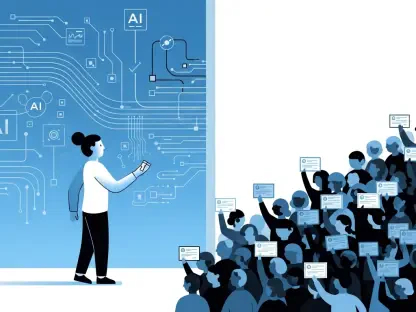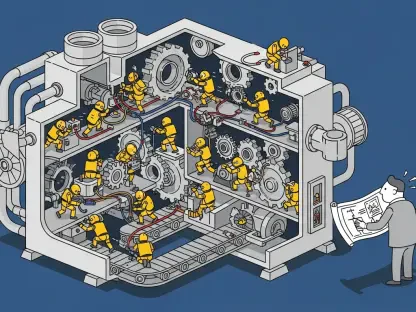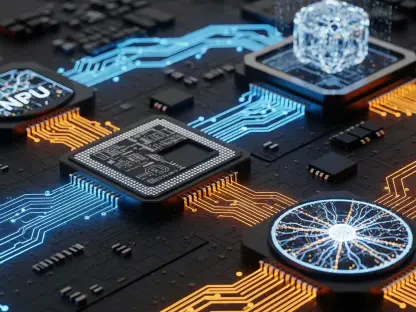Introduction
In today’s fast-paced work environments, effective team collaboration often determines the success of projects, yet many organizations struggle with fragmented communication and inefficient planning tools that hinder progress. Imagine a scenario where a cross-functional team, spanning product design, engineering, and marketing, faces delays due to scattered feedback and misaligned priorities, highlighting the urgent need for innovative solutions that streamline interactions and integrate advanced technology. The emergence of group chat functionality in ChatGPT offers a promising avenue to address such issues by transforming the AI tool into a collaborative platform for small teams. This FAQ article aims to answer key questions about this feature, exploring its mechanics, benefits, and potential impact on workplace dynamics. Readers can expect to gain insights into how this tool facilitates daily planning and enhances team coordination across various professional contexts.
The scope of this content focuses on the practical applications of ChatGPT’s group chat feature, particularly in professional settings where teamwork is critical. By breaking down complex concepts into clear, actionable answers, the goal is to provide guidance on leveraging this AI-driven tool for improved productivity. From understanding the setup process to exploring specific use cases, this article serves as a comprehensive resource for teams looking to integrate AI into their workflows.
Key Questions
What Is the Group Chat Feature in ChatGPT and How Does It Work?
The group chat feature in ChatGPT, introduced by OpenAI, marks a significant shift from individual AI assistance to a shared conversational space designed for up to 20 participants. This functionality allows friends, family, or coworkers to engage collectively with the AI, making it a versatile tool for both personal and professional planning. Its importance lies in bridging communication gaps, especially in team settings where coordinated effort is essential for success.
To use this feature, users can start a group chat through the “people” icon in the ChatGPT app, either by creating a new conversation or copying an existing one and sharing a link with others. Participants are encouraged to set identifiable details like a name, username, and profile photo to ensure clarity within the chat. ChatGPT adapts to the conversation flow, responding when directly mentioned or when contextually appropriate, and can even use emojis or generate personalized images to enrich interactions.
Privacy remains a priority, as OpenAI ensures that personal chat memories are not utilized in group settings, nor are new memories created from these interactions. Operating on the latest GPT-5.1 Auto model, the system selects response models based on user prompts while applying rate limits solely to ChatGPT’s messages. This setup provides a seamless experience, enabling teams to focus on collaboration without technical distractions.
Why Is the Group Chat Feature Relevant for Team Collaboration?
Collaboration in professional environments often faces hurdles like delayed feedback, miscommunication across departments, and challenges in onboarding new members. The group chat feature in ChatGPT addresses these pain points by offering a centralized platform where teams can interact in real time with AI support. Its relevance stems from the growing trend of integrating AI tools into workplace processes to enhance efficiency and reduce friction in team dynamics.
By providing a shared space, this feature ensures that all stakeholders remain aligned on project goals and updates, minimizing the risk of fragmented communication often seen in traditional email threads or separate chat apps. For instance, a marketing team can discuss campaign drafts while ChatGPT summarizes key points or highlights discrepancies in feedback, saving valuable time during tight deadlines.
The broader implication is a shift toward AI-assisted workflows, where technology complements human effort rather than replacing it. As companies experiment with such tools starting from 2025 onward, the ability to consolidate discussions and maintain context in a single thread becomes a competitive advantage. This relevance positions the feature as a practical solution for modern teams seeking streamlined coordination.
How Can Group Chats Enhance Cross-Functional Team Alignment?
Cross-functional teams, often comprising members from product, design, engineering, and marketing, frequently encounter challenges in aligning their diverse perspectives and priorities. The group chat feature in ChatGPT offers a unified discussion space that mitigates these issues by keeping all relevant parties in the same conversation. This capability is crucial for large organizations where siloed communication can derail project timelines.
Through this shared platform, team members can brainstorm ideas, share updates, and resolve conflicts in real time, with ChatGPT summarizing discussions or identifying unresolved matters to maintain focus. For example, during the early stages of product development, a single thread can capture input from all departments, ensuring that critical insights are not lost in separate channels. This approach fosters a cohesive understanding of project objectives.
Additionally, the AI’s ability to preserve context as conversations evolve helps prevent misunderstandings that often arise from disjointed interactions. By reducing the need for repetitive explanations or follow-up meetings, teams can allocate more time to strategic tasks. This enhancement of alignment underscores the feature’s value in complex, multi-departmental projects.
What Role Does the Feature Play in Streamlining Review Cycles?
Review cycles for project drafts or deliverables can be notoriously slow, especially when feedback is scattered across multiple platforms or delayed by asynchronous communication. ChatGPT’s group chat functionality tackles this inefficiency by enabling real-time reactions and consolidated input from team members. Its role in accelerating iterations is vital for teams operating under tight schedules.
Within a group chat, teams can upload content, receive immediate comments from multiple participants, and request ChatGPT to revise sections or highlight inconsistencies in feedback. This immediate interaction cuts down the time spent waiting for responses, allowing for quicker refinements. A design team, for instance, can iterate on visual concepts faster by discussing changes directly in the chat with AI assistance.
The result is a more dynamic review process that minimizes bottlenecks and keeps projects on track. By centralizing feedback and leveraging AI to organize or refine content, the feature ensures that iterations are not only faster but also more precise. This streamlining effect is particularly beneficial in high-pressure environments where every hour counts.
How Does It Support Onboarding New Team Members?
Integrating new team members into ongoing projects often involves a steep learning curve, as they must catch up on past decisions and current priorities through archived messages or secondhand accounts. The group chat feature in ChatGPT simplifies this process by providing a single space where newcomers can access summarized discussions with AI assistance. This support is essential for reducing onboarding time and ensuring accuracy.
New hires can join a relevant group chat and request ChatGPT to generate summaries of prior conversations, gaining instant insight into key topics without sifting through extensive logs. This capability eliminates the dependency on colleagues for detailed recaps, allowing existing team members to focus on their tasks. For example, a new engineer can quickly understand project milestones by reviewing AI-generated overviews.
Beyond saving time, this approach ensures that the information conveyed is consistent and comprehensive, avoiding the risk of misinterpretation. By facilitating a smoother transition, the feature helps new members contribute effectively sooner, enhancing overall team productivity. Such support is a game-changer for organizations with frequent staff changes or rapid growth.
Can Group Chats Improve Routine Task Coordination and Creative Feedback?
Routine task coordination, such as planning internal events or drafting communications, often involves tedious back-and-forth that consumes valuable time. Similarly, creative projects require structured feedback to avoid rework and resolve conflicting opinions. ChatGPT’s group chat feature addresses both scenarios by offering AI-generated tools and organized discussion spaces, improving efficiency in these areas.
For routine tasks, team members can rely on ChatGPT to produce schedules, checklists, or polished text, which can then be refined collaboratively within the chat. This reduces the effort needed to start from scratch and ensures alignment on details. An HR team organizing a company event, for instance, can quickly draft a timeline with AI help and finalize it through group input.
In creative contexts, the feature consolidates feedback into a single thread, allowing ChatGPT to categorize comments or suggest solutions to contradictions. This organization helps teams focus on actionable insights rather than navigating disparate opinions. By enhancing both logistical planning and creative processes, the feature proves its versatility across diverse team functions.
Summary
This FAQ article sheds light on the transformative potential of ChatGPT’s group chat feature in boosting team collaboration. Key points include its operational mechanics, which allow up to 20 participants to engage in a shared AI-supported conversation, and its privacy-focused design that safeguards personal data. The feature stands out for enhancing cross-functional alignment, streamlining review cycles, supporting onboarding, and improving routine task coordination as well as creative feedback, making it a multifaceted tool for professional settings.
The main takeaway is that this functionality serves as a complementary asset, augmenting human interaction rather than replacing it, and addresses persistent challenges like miscommunication and inefficiency. Its alignment with the trend of AI integration into workflows suggests a lasting impact on how teams plan and execute projects. For those seeking deeper exploration, resources on AI-driven collaboration tools or case studies on team productivity can provide additional context and inspiration.
Final Thoughts
Reflecting on the insights shared, it becomes evident that ChatGPT’s group chat feature marks a notable advancement in blending AI with team dynamics. The ability to centralize discussions and leverage AI for summaries, drafts, and feedback organization proves to be a practical solution for many workplace challenges. This development paves the way for more cohesive and efficient collaboration, setting a precedent for future innovations in the field.
Looking ahead, teams are encouraged to experiment with this tool in their specific contexts, whether for project planning, creative brainstorming, or routine coordination. Identifying specific pain points and testing how AI assistance can alleviate them is a recommended next step. Additionally, staying informed about updates to such features or exploring complementary technologies can further optimize collaborative efforts, ensuring that teams remain adaptable in an ever-evolving digital landscape.
